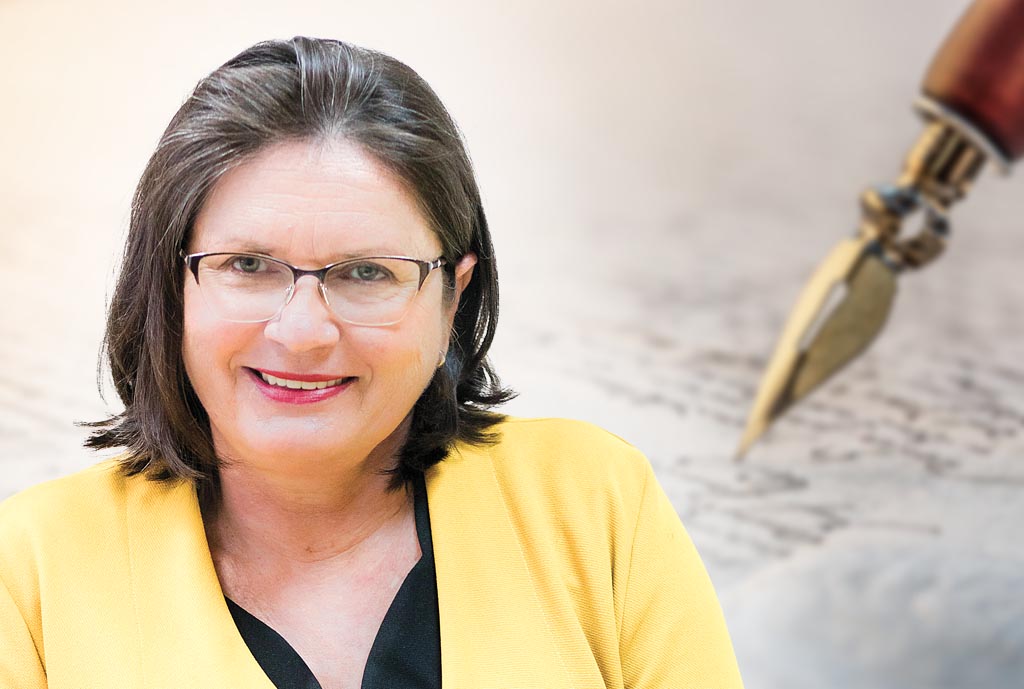By: dr. Andreja Valič Zver, historian
Let’s leave aside the fact that my colleague, top museum expert Verena Vidrih Perko, and I participated in the earliest “incubation” phase of the conception of the new Museum of Slovenian Independence in the winter of 2020, which then, with the decision of the Government of the Republic of Slovenia, actually saw the light of day.
In the face of media scrutiny of how I view the establishment of a museum that would adequately present the most important period of Slovenian “being and life”, I of course expressed my enthusiasm and added that in 2021 we will celebrate the thirtieth anniversary of the most important act in the history of the Slovenian nation. It behoves us to commemorate this properly, as do all countries that are proud of their beginnings. Just think of Norway or the Baltic states. I saw the museum as an excellent opportunity to present not only the events, processes, and actors of those days, but also as an opportunity to present the achievements of the Slovenian nation and its country in the last thirty years (plebiscite, independence, victory in the war for Slovenia, international recognition, entry into Euro-Atlantic integration, EU Council presidency 2008 and 2021). In my opinion, nowadays museums should not be just dusty institutions, but interactive houses with a lively programme that attracts local and foreign visitors every day. There is absolutely nothing wrong with the fact that historians and other interested public have not yet figured out everything about the time of Slovenian independence: that is the nature of researching past events. But this should not stop us from strengthening our pride in our national achievements, which is certainly an independent Slovenian state. And that is why the Museum of Slovenian Independence deserves more than just occasional memorials or small memorial rooms.
Well, in the winter of 2023, the great expectations about the modern museum layout have evaporated, it remains only a hotbed of disappointed dreams and hopes. Just as the Huns and other barbarian tribes once invaded the Roman Empire and burned and destroyed everything in front of them, the left-wing activists in power rushed into a barely established institution and destroyed it. All their swearing about the freak, which they stuck in the so-called Museum of Slovenian Recent and Contemporary History will turn out to be a new bluff. But why should we believe their sweet talk, especially in the case of a museum, if their pre-election fantasies are falling like dominoes from cards? Let’s just remember “30 days to a specialist”, “30,000 new flats”, and whatever else was loaded onto the wagons of naïve voters.
Of course, it is well known that the museum’s story would also have its dark side in the form of party and other apparatchiks, who were proven to be against Slovenian independence until the last and even then. An awkward thing. Instead of Kučan being celebrated as the greatest conqueror of independence and the Slovenian “Garibaldi, Mazzini, Bismarck” along with anyone else, he will indisputably turn out to be a sad historical creature in the eyes of future generations. After all, only remember the episode from May 1990 with the surrender of the weapons of the Slovenian territorial defence into the hands of the hostile Yugoslav army. The case bears Kučan’s “print”. Even then, Dr Jože Pučnik called it high treason and no amount of deep cleaning will turn black into white! It would also be awkward to show the talk of the then “renovators”, the current “social democrats”, who in June 1991 – just before the aggression of the Yugoslav army – begged Piero Fassin not to put independence in the hands of “hose rightists”!?! Perhaps we should dedicate a special room in the current “mixed museum” to the infamous ideologue Kardelj, who – loosely according to one of the following “ideologues” Lukšič – probably cheered for an independent Slovenia on his deathbed?!?
There are more and more examples that are documented and described in authentic historical publications. But you will say that – as in every war – there was something wrong in the Slovenian one as well. Perhaps, but the fact is that the Slovenian war for independence did not have to be defended in an international court, as happened to all wars in the Balkans in the nineties of the 20th century!
Let me conclude by thinking that historical memory is short and unreliable if it is written only in our heads. Logically, it is necessarily biased if it is not put into context and refined with acquired knowledge. Including the one from museums. But museum narratives can be uncomfortable for many. And in the Slovenian case, apparently also dangerous.

